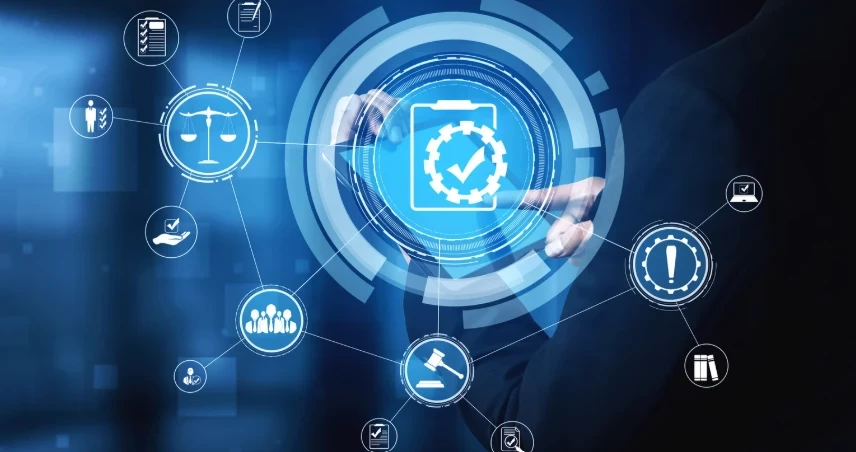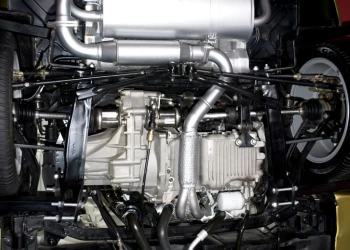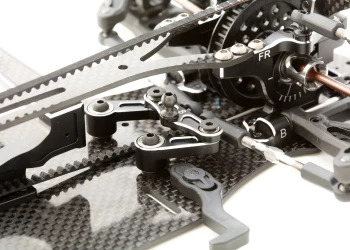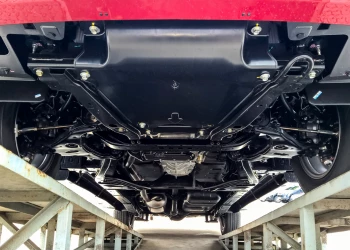Transforming BMW: The Next 100 Years of Sheer Driving Pleasure
Add bookmarkEven as BMW celebrated its 100-year anniversary with a celebration in Munich's Olympiahalle, it finds itself entering a new disruptive digital age commonly called the Fourth Industrial Revolution. Not only does the fabled marque face a resurgent Mercedes-Benz and slowing sales in China but, looking to the future, tech juggernauts Google and Apple may become the new competition.
In an interview with Automotive News, BMW board member Ian Robertson shared a glimpse of the company’s vision for the next 100 years: "We see the future of mobility in an urban environment still with the car at the center, but it is probably going to be autonomous to a greater or lesser extent, it is probably going to be shared, it is probably going to be zero-emissions and it is definitely going to be accessed by connectivity."
Giving form to the vision, BMW also unveiled the Vision Next 100, a vehicle unlike anything that’s ever been seen before. Described by some as a futuristic supercar crossed with a lizard, the styling may not be to everyone’s liking but the technology certainly is cutting edge.
The most visible of these technologies is the “exoskeleton” which fully encloses all four wheels. Using what BMW refers to as materials of the future, this covering stretches and contracts as the wheels are turned left to right.
As can be expected the interior is equally unusual, with a steering wheel that retracts depending on whether the car is being driven in manual or autonomous (driverless) mode. A closer look at the cabin reveals an island sized center console with seats and doors that swivel and click into a single unit so that the driver and front-seat passenger can face each other.
The digital intelligence of the BMW VISION NEXT 100 is focused on the Companion, which provides the driver with subtle, intuitive assistance in every situation. Perfect connectivity between the user and the surroundings enables the BMW Companion to always provide the right recommendations to meet personal mobility preferences, both during driving and outside the vehicle.
This includes augmented reality which maximizes the driving experience by indicating the ideal driving line and flashing alerts on the windshield monitor if a pedestrian or cyclist crosses in front of the vehicle.
Although BMW CEO Harald Kruger stated that the car will be "revolutionary" and raise premium individual mobility to "previously unknown levels," no further details were revealed; except to say it will be developed under the iNEXT banner. BMW claim it will focus on new forms of automated driving and digital connectivity, along with electric drivetrains, lightweight construction and "trailblazing" interior design.
What BMW hasn’t revealed (yet) is what the new technologies are likely to be that underpin the Vision Next 100 and its successors.
Under the skin of the Model Year 2116 BMW
What we do know is that the vehicle will be self-driving, or at least have a high level of driver assist, and will be electrified.
Unlike rivals Mercedes Benz and Audi the BMW brand has been built on “Sheer Driving Pleasure”, and I can’t help but wonder how the company will interpret this in a world where most, if not all, cars are eventually self-driving. In an automated world it’s highly unlikely that regulators would allow human intervention or control that interferes with the disciplined split second decisions made by the artificial intelligence piloting the vehicle: And if this comes to pass would BMW have to sacrifice Sheer Driving Pleasure for mere mobility?
The future of electrification is just as difficult to predict: This rapidly developing technology (or more accurately technologies) is not likely to evolve along a single path but will probably develop into several technologies that will satisfy divulging needs.
Based on current tractive motor trends, where induction motors are favoured for high performance applications, I believe BMW may follow the Tesla route and fit a high power density 3-phase AC induction motor, possibly following Chinese automotive R&D company Techrules’ example of fitting six motors to an AWD platform.
Using 4 wheel-hub motors and an additional pair on the rear axle (In the Techrules’ application each motor weighs 13Kg and is coupled to it’s own inverter, with a combined output of 768Kw) will provide an ideal configuration for electronically controlled torque vectoring. Four-way torque vectoring guarantees maximum cornering stability at high speed and eliminates the requirement for complex and heavy mechanical differentials.
As previously mentioned there are so many developing technologies that it’s difficult to forecast any one that’s likely to come to the fore in 100 years, but the innovative multi-phase MotorBrain electric motor could also be a serious contender. Relying on a nine phase system using newly developed ferrite magnets this system reduces weight by about 15% (from 90 kg down to 77 kg) through integration with the gearbox and inverter.
Doing away with rare earth magnets also allows the development of different motor concepts such as asynchronous motors, ferrite magnet based IPM synchronous motors, SMC (soft magnetic composite) based claw pole machines and synchronous reluctance motors.
The unique control and sensor architectures use redundancies which make the aviation-level safety controls affordable. Compared to conventional 3-phase electric motors which stop when a single phase fails, the MotorBrain system has a formally verified absence of single point of failure which promotes consumer confidence in eMobility.
Irrespective of which traction motor technology BMW follows, effective generation and storage of electricity will be required. Currently lithium-ion batteries are widely used in PHEVs and EVs, but this technology still has a problem with power density, time to charge and range, which could open the door for hydrogen fuel cells.
Hydrogen fuel cells currently offer quick refill rates and acceptable range but the infrastructure is lacking, and the hydrogen tanks are bulky and relatively heavy.
Nevertheless these problems may have been resolved by the time the MY2116 models hit the showroom:
In 2014 the results of research carried out by Nobel Laureate Andre Geim, at the University of Manchester, proved that the one-atom-thick materials graphene and hexagonal boron nitride (hBN), once thought to be impermeable, actually allow protons to pass through them. This process, the Manchester researchers believe, will lead to more efficient fuel cells and the simplification of the heretofore difficult process of separating hydrogen gas for use as fuel in fuel cells.
And if fuel cell technology needs some topping up, a team of mechanical engineers from Rice University have devised revolutionary, spray-on rechargeable batteries that could be combined with solar cells to create self-sufficient, energy conversion-storage devices.
By breaking down the different components of a battery and rendering them into a liquid form, the technology could revolutionize widespread renewable energy capture, storage and utilization and the way devices are powered.
Moreover, a new and independent type of energy conversion-storage device could be created by fitting a series of these batteries grouped together to a series of solar cells. This energy storage device could then be used to convert any outdoor surface to an energy conversion-storage device.
BMW moves away from its engine driven business
Decades after BMW sold its aero-engine business, the spinning blue-white propeller still adorns the hood of its vehicles as a last remnant of its heritage. If BMW wants to celebrate its next century as a fully independent company, it may have to undergo a transformation, almost as radical, to prepare itself for a zero-emissions future built around the Internet of Things.
But what would happen to the group's powertrain plants if the company ceased building combustion engines? "It's not like we're going to say 'Starting tomorrow we are only going to build electric cars'," said one company source, referring to the strategy announcement. "The question is how we can manage the transition from relying solely on combustion engines for profits, since not one carmaker currently earns money selling electric cars."
To test the waters BMW will launch a flagship self-driving car early next decade in response to the threat from tech giants such as Apple and Google in the field of autonomous driving.
The car will be "revolutionary" and will raise premium individual mobility to "previously unknown levels," BMW CEO Harald Kruger claimed while unveiling the automakers’ future strategy.
BMW development chief, Klaus Froehlich, expects the car to compete with new entrants in the auto business rather than with offerings from other traditional automakers.
Perhaps Kruger sums up the sentiment, not only within BMW but all traditional OEMs when he says: “We need to act swiftly in the digital world and be prepared to take risks.”





















